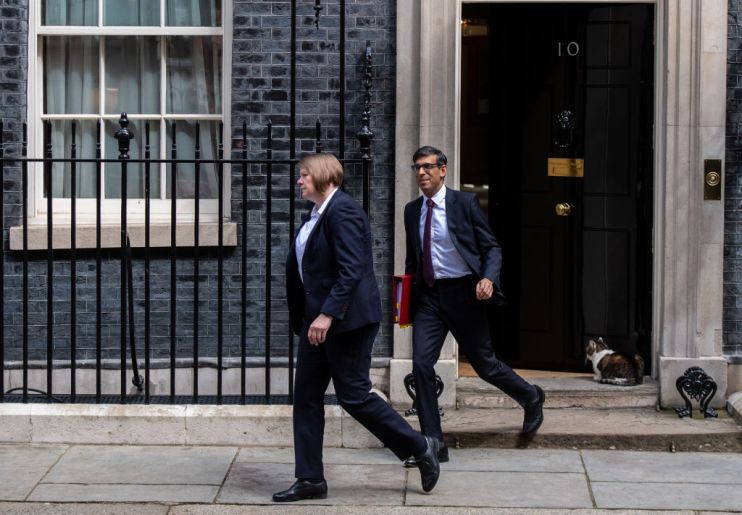More than 6m extra Brits to be caught by higher income tax rate net in just a few years

More than an additional 6m Brits are poised to be caught in the higher income tax net compared to the early 1990s in what has been characterised as the steepest tax hike in four decades, new research out today reveals.
Prime Minister Rishi Sunak’s decision as Boris Johnson’s Chancellor to freeze tax bands for several years in March 2021 is tipped to shift millions of extra workers into paying the higher 40 per cent rate of income tax, according to the economic think tank the Institute for Fiscal Studies (IFS).
Number 11’s present occupant Jeremy Hunt last November stuck an extra year on top of an already six year freeze to income tax bands, which is forecast by the Treasury to raise tens of billions of pounds.
Some 2.5m more Brits will be paying the higher and additional rate of income tax as a result of the current government’s band freezes.
That policy now represents the largest tax increase since ex-Chancellor Geoffrey Howe doubled VAT in 1979 to 15 per cent, the IFS calculated.
The organisation’s research found the number of people paying the steeper levy will reach 7.8m by 2027/28, or 14 per cent of the population, up from 1.6m (3.5 per cent of the population) in 1991/92 – a near quadruple increase.
In recent years, successive Chancellors have kept thresholds at which loftier rates of income tax apply unchanged to raise revenue to rebalance the public finances, which had been weakened by the Covid-19 pandemic and the energy price shock.
Anyone earning £12,570 or less pays no income tax; anyone on a salary of up to £50,270 beyond that level pays 20 per cent; 40 per cent is levied on earnings up to £125,140 and an additional rate of 45 per cent is slapped on any income beyond that.
The top rate taxpayers also have some of their personal allowance taken away.
Crystallising tax thresholds drags workers into paying more tax when they receive a pay rise, a process known as “fiscal drag”. This dynamic is amplified during periods of high inflation when staff are more likely to receive a greater pay increase.
Prices have risen more than 10 per cent over the last year, a historic increase.
Those cumulative freezes have changed the structure of Britain’s tax system.
“In the space of 40 years, higher rates of income tax will have gone from being a feature of the system reserved for those with the very highest incomes, to one that impacts a far more substantial proportion of the population,” the IFS said.
Share of UK population paying different income tax rates

Over that same period, there has been a big increase in the number of nurses and teachers paying more income tax. In the early 1990s, nearly no nurses and very few school workers were caught by the more punitive tax rate.
Within the 14 per cent of Brits paying the steeper income tax rate, some will actually have to give up 60p of every additional £1 they earn.
A Treasury spokesperson said: “After borrowing hundreds of billions to support the economy during the pandemic and Putin’s energy shock, we had to take some difficult decisions to repair the repair the public finances and get debt falling.”
Latest Office for National Statistics figures show the UK borrowed a lot less than the Office for Budget Responsibility (OBR) predicted at the March budget, intensifying speculation over whether Sunak and Hunt will table tax cuts as part of their election manifesto in an effort to win over voters.
The latest a UK general election can be held is January 2025, though sometime in autumn 2024 is being seen as a more likely voting day.
According to the OBR, Britain’s tax burden – Treasury revenues as a share of the economy – is on track to hit a post-Second World War high.